In today’s fast-paced world, creating a peaceful bedroom is essential for unwinding and achieving quality rest. A minimalist interior design offers the perfect solution, focusing on simplicity and tranquility. This guide will show you how to design a bedroom that promotes relaxation and mindfulness.
The Power of Simplicity in Bedroom Design
Why Minimalist Design is Perfect for Relaxation
Minimalist interior design is based on the philosophy of “less is more.” It emphasizes simplicity and the elimination of clutter, both of which contribute to a calm and peaceful environment. When your bedroom is free of excess furniture and decorations, your mind can relax more easily. Simplicity allows you to focus on what matters most: rest and relaxation.
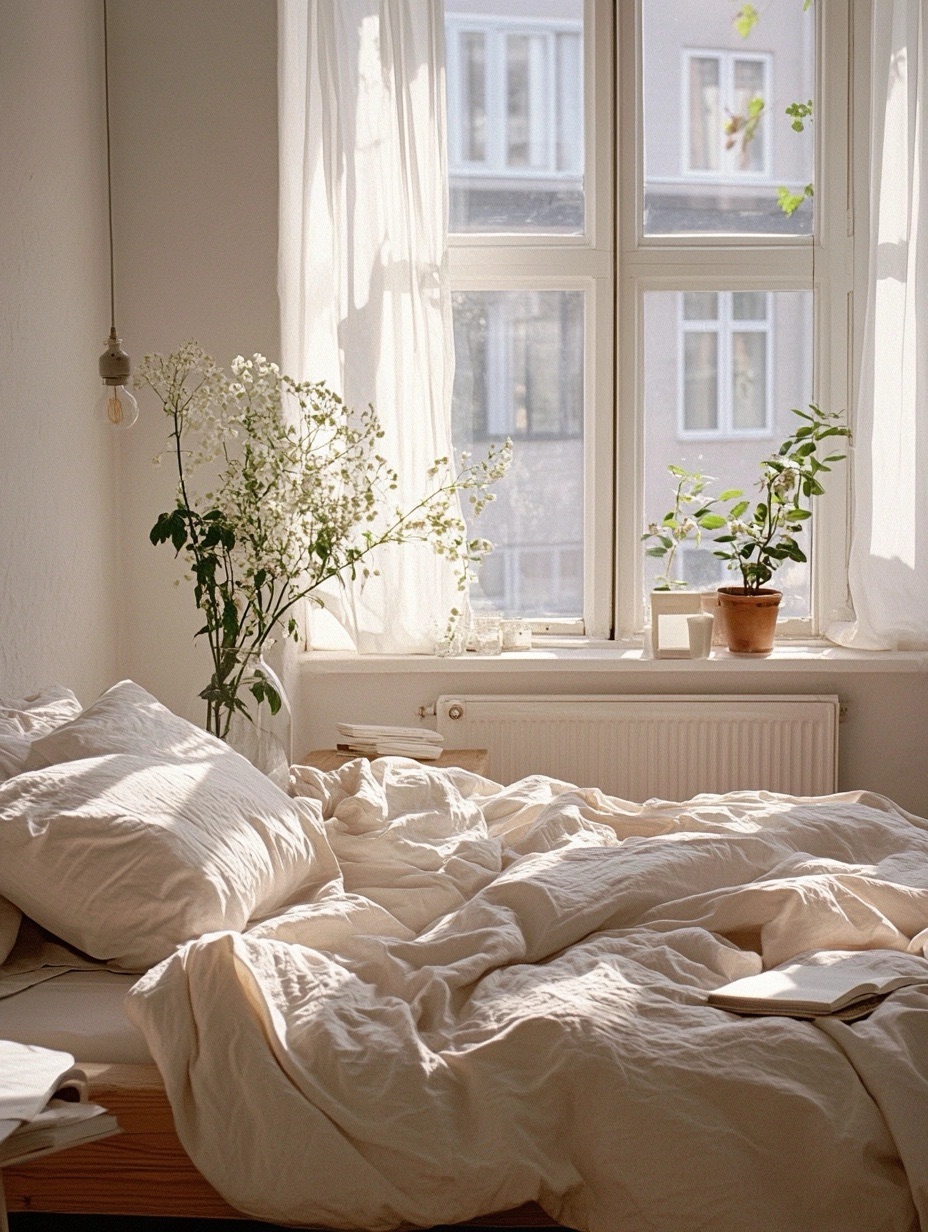
Decluttering for a Stress-Free Environment
A cluttered space often leads to a cluttered mind. Start by removing unnecessary items from your bedroom. Keep only essential furniture and décor to create a sense of openness. This decluttered environment is proven to reduce stress and promote mental clarity, making it easier to relax and fall asleep.
Essential Elements of a Minimalist Bedroom
Neutral Color Palettes for a Calming Atmosphere
Neutral colors such as white, beige, soft grays, and earthy tones are key in minimalist interior design. These colors evoke a sense of serenity and help create a peaceful atmosphere. When paired with natural light, neutral tones reflect calmness, making your bedroom a tranquil retreat from the outside world.
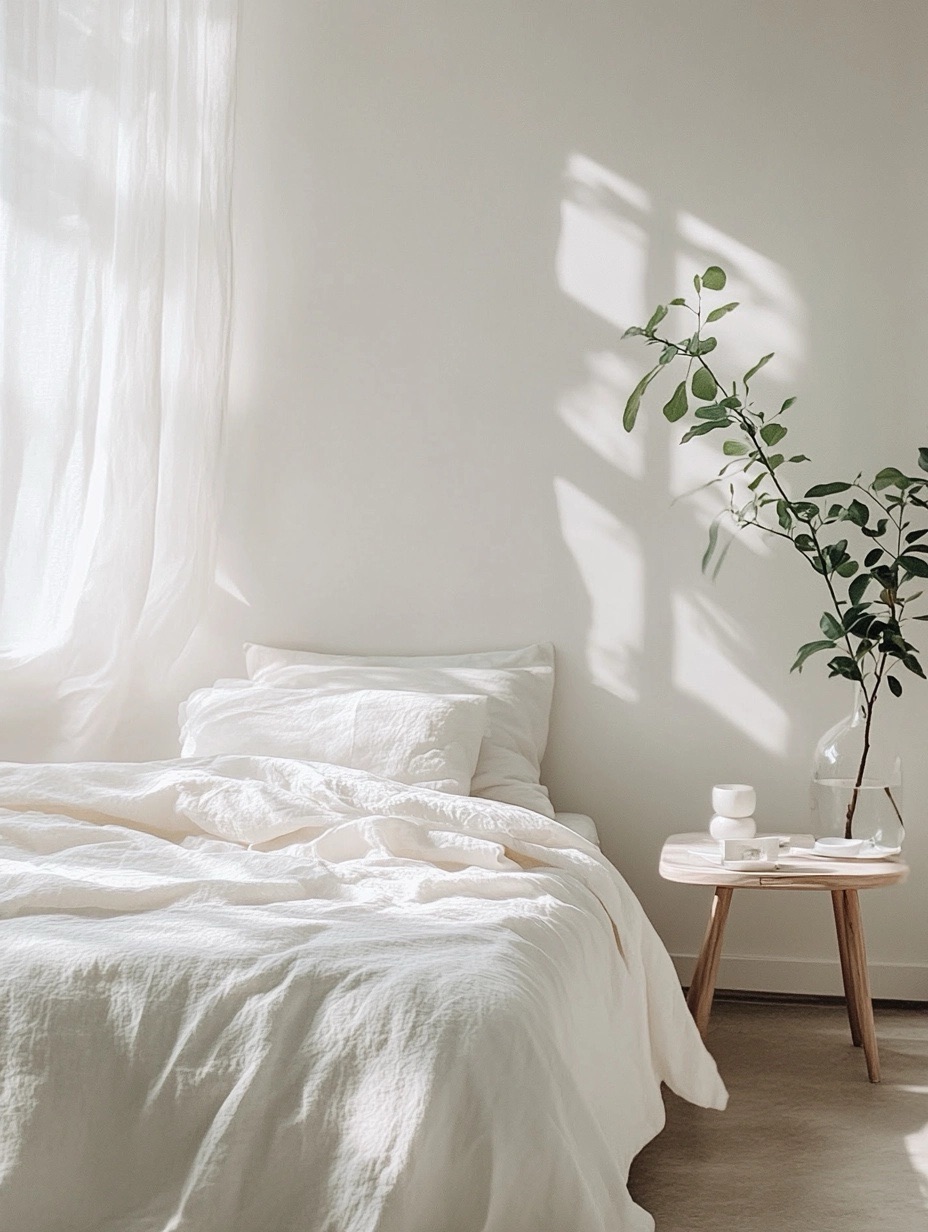
The Role of Natural Light in Creating a Relaxing Space
Maximizing natural light is essential for a minimalist bedroom. Large windows or sheer curtains allow sunlight to flood the room, enhancing the sense of openness. Natural light helps regulate your circadian rhythm, which is vital for good sleep, and also contributes to a welcoming and airy space.
Furniture Choices for a Peaceful Bedroom Interior
Choosing Simple, Functional Furniture Pieces
When selecting furniture, prioritize functionality and simplicity. Low-profile beds, sleek nightstands, and minimal dressers are ideal. Opt for pieces that have clean lines and avoid ornate designs. The less visual noise your furniture creates, the more serene your room will feel.
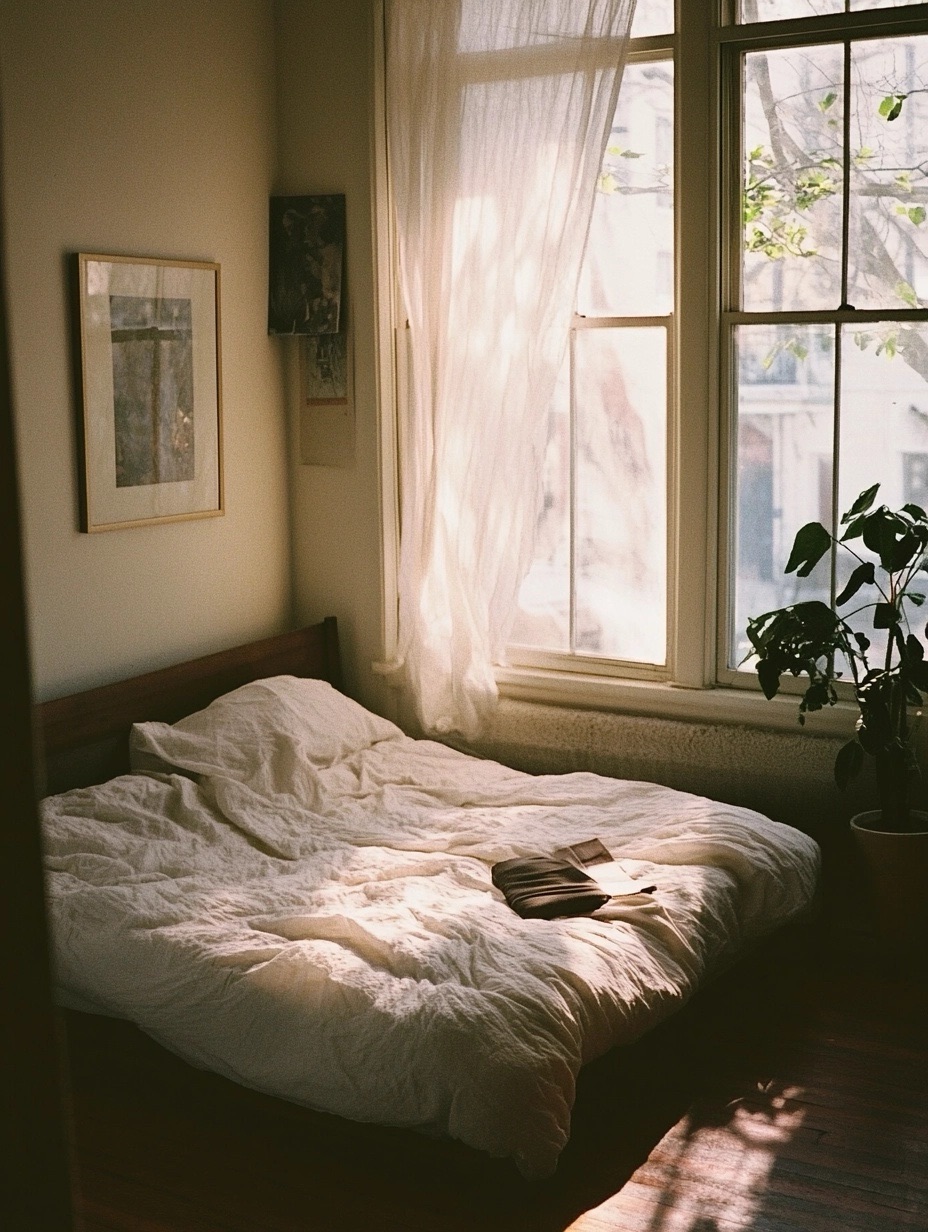
How to Incorporate Low-Profile Furniture for Better Flow
Low-profile furniture contributes to the minimalist aesthetic by maintaining a streamlined look. This type of furniture helps create better flow and maximizes the sense of space, even in smaller rooms. Beds and chairs with shorter legs keep your eye line low, adding to the feeling of calm and relaxation.
Textures and Fabrics: Softening the Minimalist Look
Soft Bedding for a Cozy Feel
While minimalist design often focuses on simplicity, it doesn’t have to be cold or uninviting. Add warmth and comfort to your bedroom with soft bedding. Linen, cotton, and wool are excellent fabric choices that bring a cozy touch without overwhelming the minimalist style.
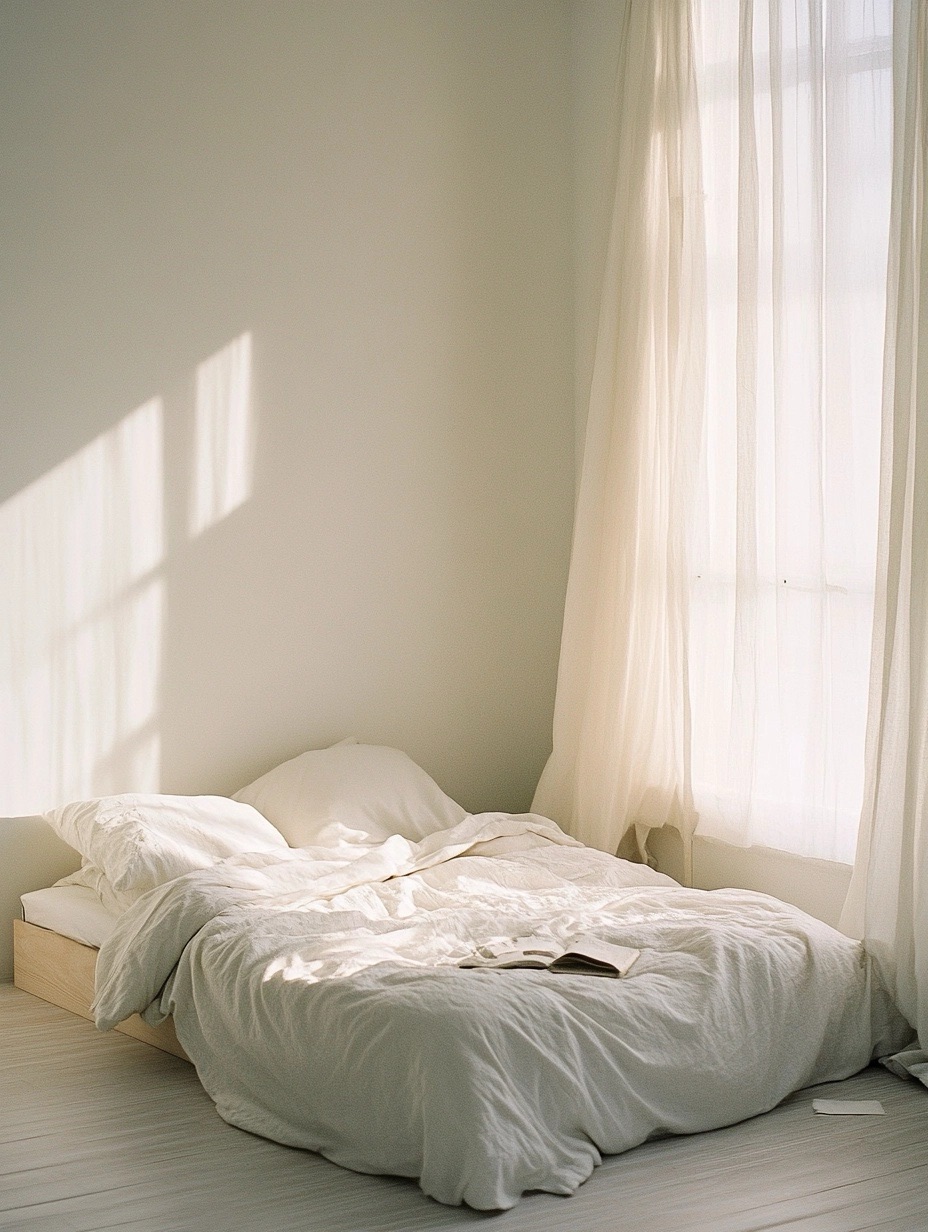
Incorporating Natural Materials for a Zen-Like Ambiance
Natural materials like wood, bamboo, and stone introduce a sense of nature into the bedroom. These elements not only complement the minimalist aesthetic but also create a zen-like ambiance. Integrating nature into your design fosters peace and harmony, making your room a perfect space for relaxation.
The Importance of Lighting in a Minimalist Bedroom Interior
The Calming Effects of Soft, Ambient Lighting
Lighting plays a crucial role in setting the mood in your bedroom. Soft, ambient lighting can help you relax before bed and reduce stress. Consider using dimmable lights or bedside lamps with warm tones to create a calming environment. Avoid harsh, bright lights that can disrupt your sense of peace.
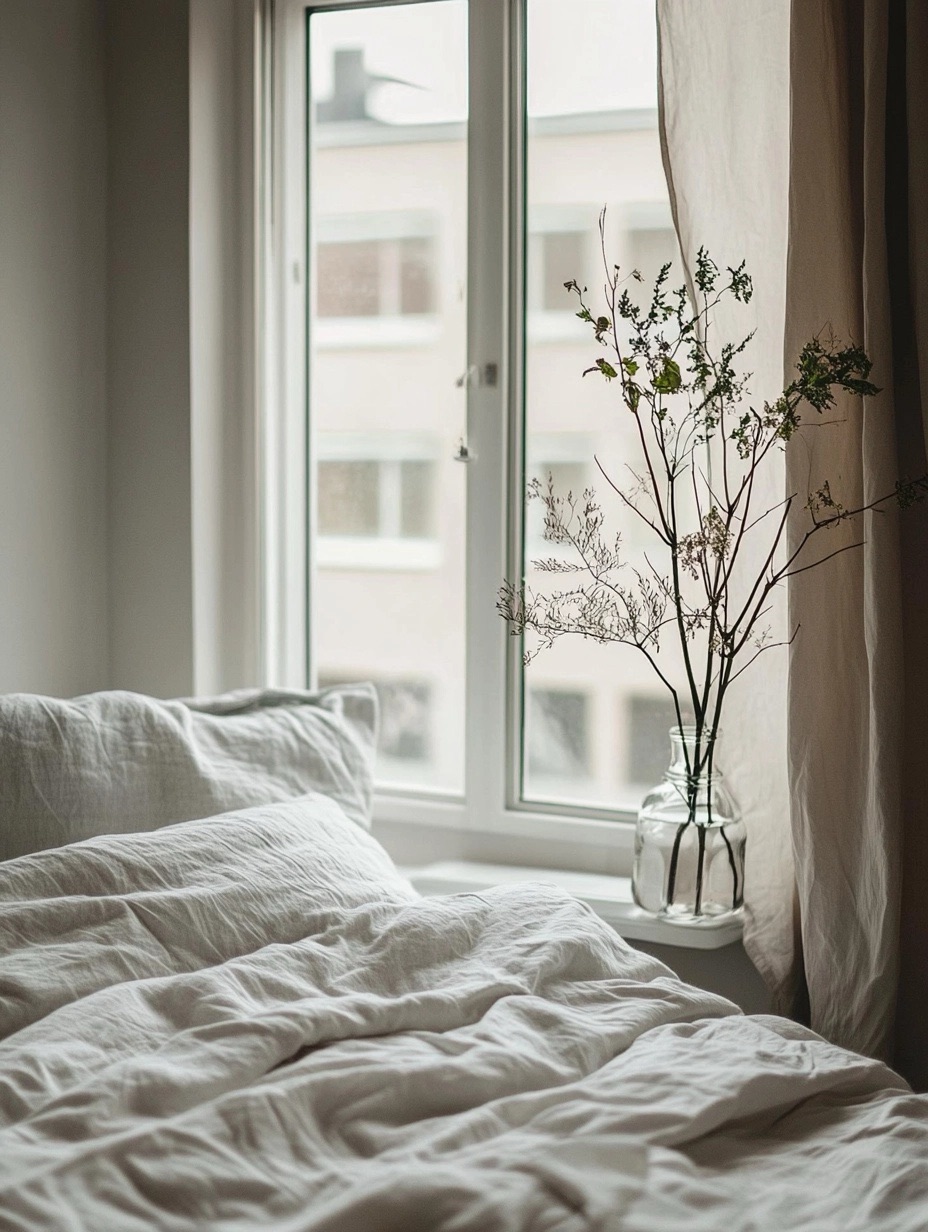
Using Adjustable Lighting to Match Your Mood
Having control over the lighting in your room can significantly improve your relaxation experience. Adjustable lights allow you to set different moods depending on the time of day or your activities, whether it’s reading, meditating, or sleeping. Invest in smart lighting that lets you create the perfect ambiance with a touch.
Adding Greenery: A Natural Touch for Peaceful Vibes
Selecting the Right Plants for a Calm Environment
Bringing nature indoors with plants can enhance the serenity of your minimalist bedroom. Choose low-maintenance plants like succulents, snake plants, or peace lilies, which are known for their calming properties. Greenery not only beautifies your space but also improves air quality and reduces stress.
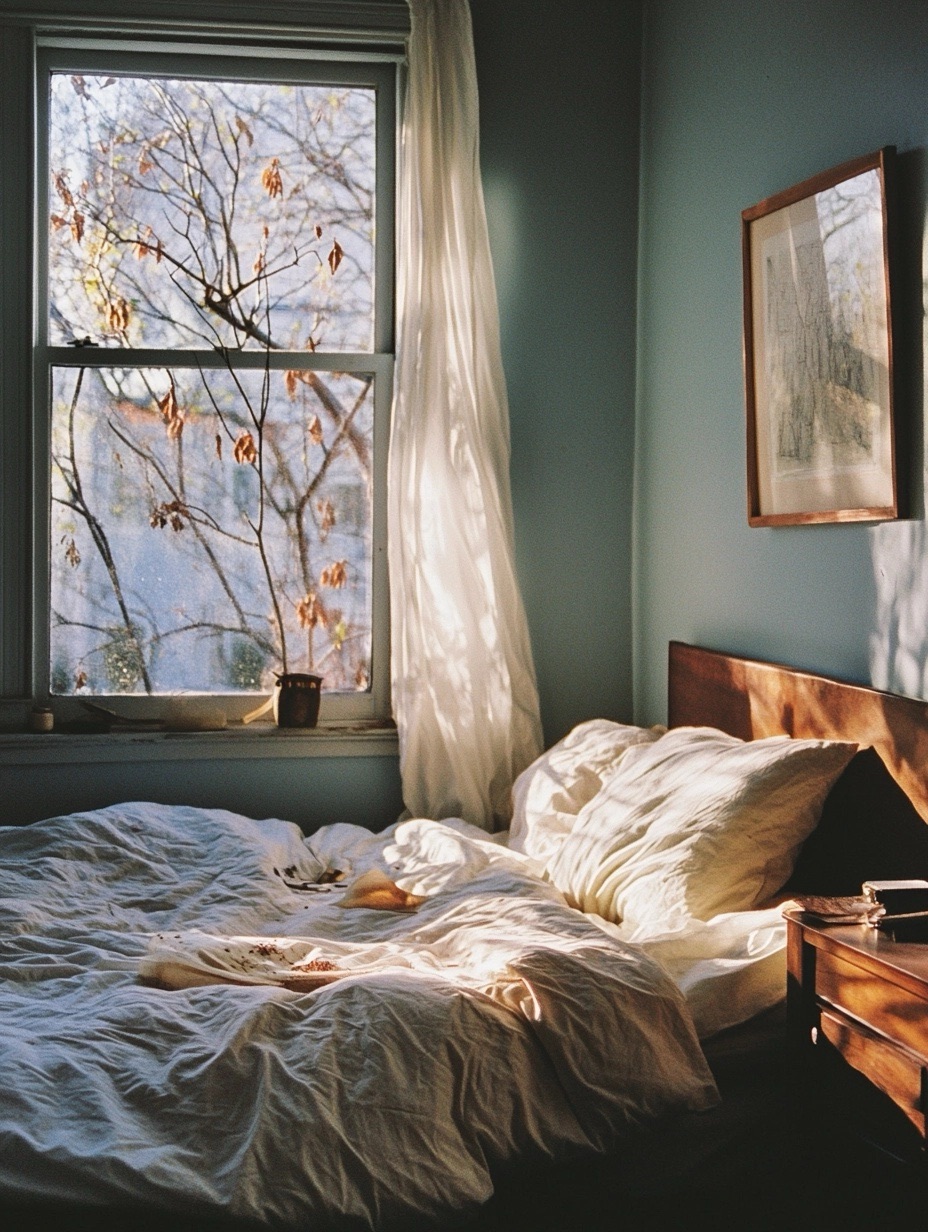
How Plants Improve Air Quality and Promote Relaxation
Many plants, such as aloe vera and lavender, are known for their air-purifying qualities. Clean air is essential for better sleep and overall well-being. Plants also create a connection with nature, which has been shown to lower anxiety and promote relaxation, making them a must-have in a minimalist bedroom.
The Impact of Artwork and Wall Décor in a Minimalist Space
Choosing Minimalist Artwork for a Clean Aesthetic
When selecting artwork for a minimalist bedroom, stick to pieces that are simple and clean. Abstract art with neutral tones or soft landscapes works well in these spaces. The key is to choose art that enhances the room without overwhelming it. A few well-chosen pieces can add personality without disrupting the calm atmosphere.
Using Wall Art to Enhance Your Bedroom’s Atmosphere
Wall art in a minimalist bedroom should be used sparingly, but it can be an excellent way to add visual interest. Consider large, singular pieces or minimalist frames that blend seamlessly into the décor. Remember, in minimalist interior design, less is often more.
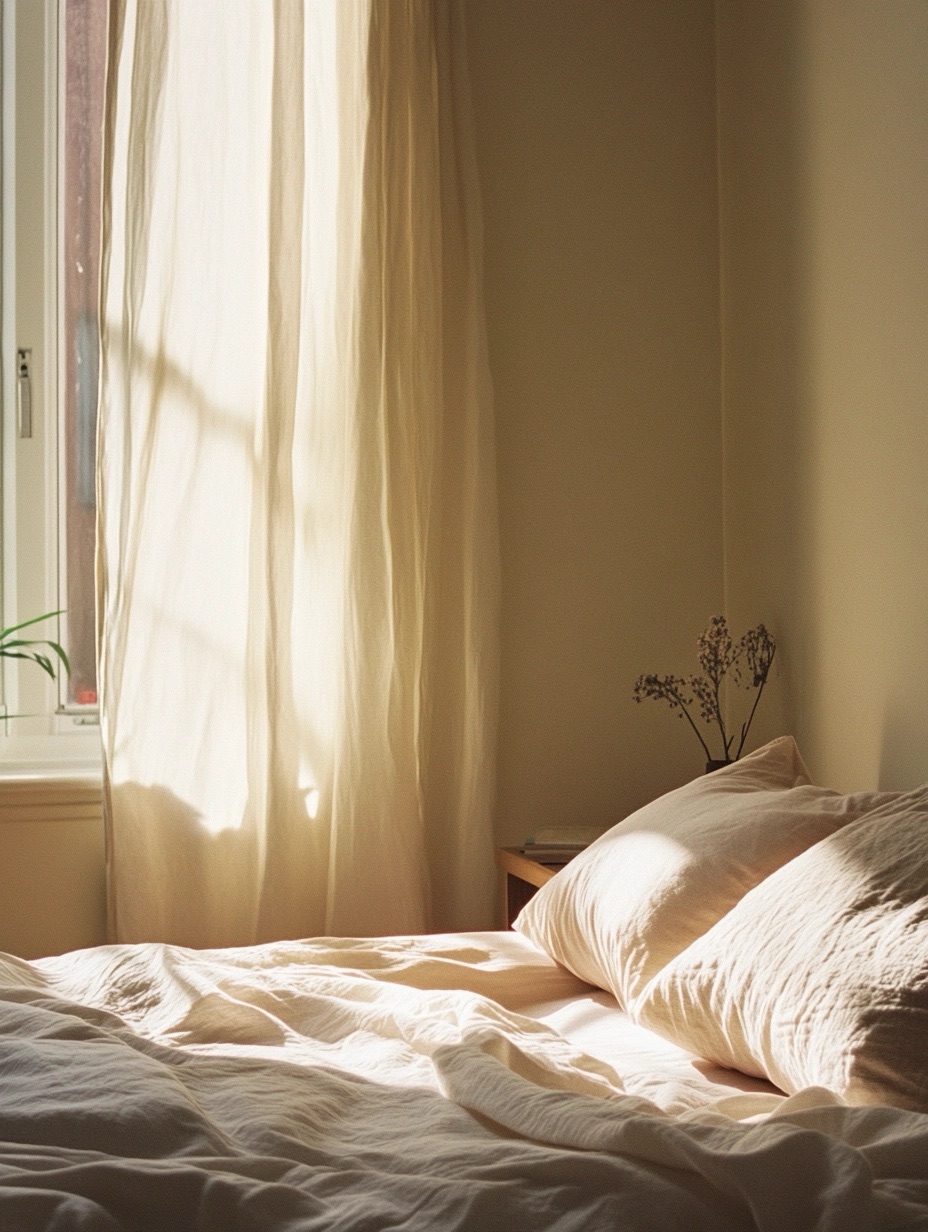
Incorporating Meditation and Relaxation Areas
Creating a Dedicated Space for Meditation
Designating a specific area in your bedroom for meditation can enhance the calming energy of the space. A small corner with a yoga mat, a meditation cushion, or a soft chair can serve as your personal retreat. Keep this area free of distractions to create a truly relaxing space where you can unwind.
Design Tips for a Relaxation Nook
To create a cozy relaxation nook, consider using soft pillows, blankets, and a small side table for candles or books. This can become your sanctuary within the bedroom, a place to meditate, read, or simply breathe. A minimalist approach to this area helps maintain the overall serenity of your room.
The Role of Scent in a Relaxing Bedroom Interior
How Essential Oils Promote Relaxation
Scent plays an important role in how we feel, and essential oils are a natural way to promote relaxation. Lavender, chamomile, and eucalyptus are popular choices for calming the mind and improving sleep. You can use a diffuser to spread these scents throughout your bedroom for a spa-like atmosphere.
Using Natural Scents to Enhance Sleep Quality
Natural scents have been shown to improve sleep quality. Incorporating essential oils into your bedtime routine can create a consistent signal to your brain that it’s time to rest. The soothing aromas will help you fall asleep faster and wake up feeling refreshed.
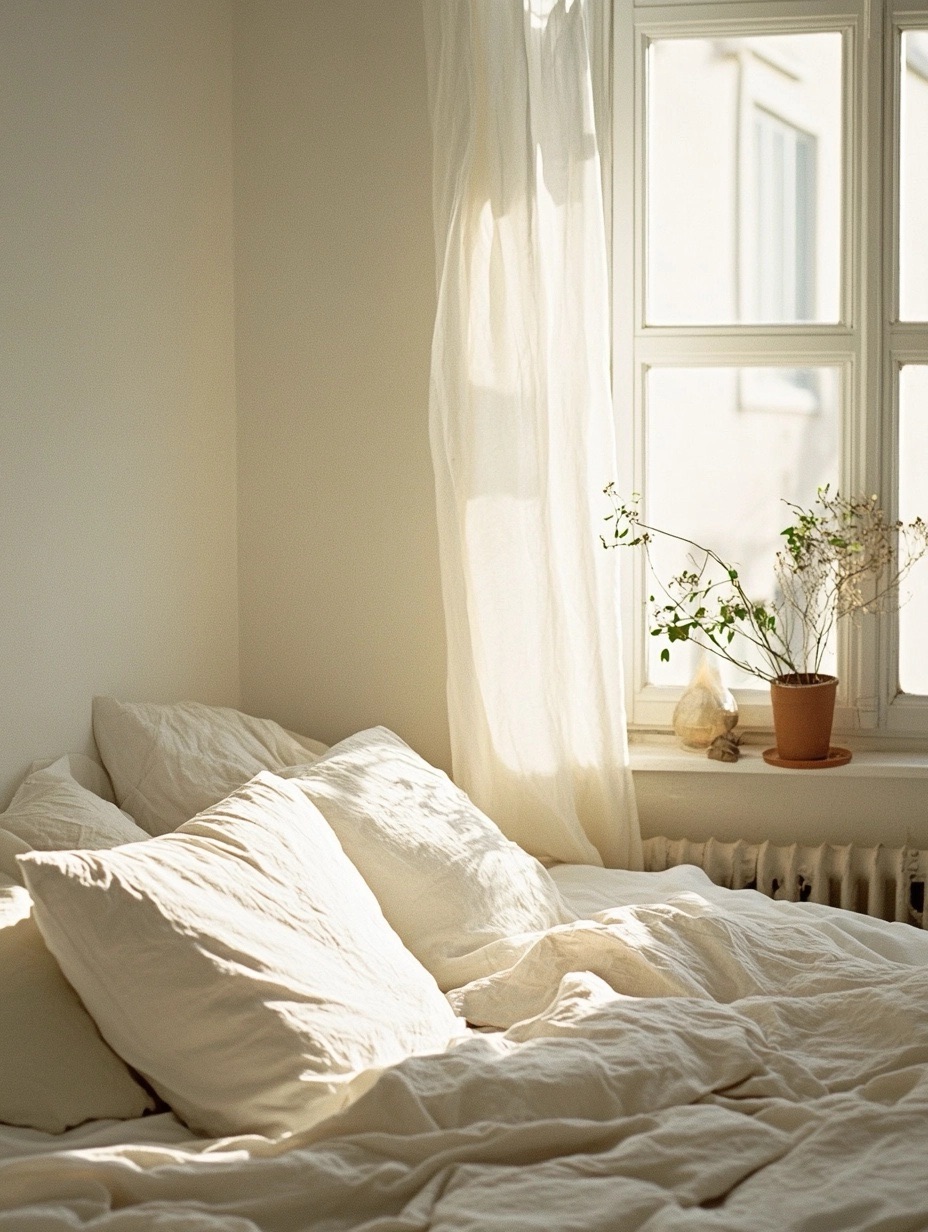
Maintaining a Minimalist Bedroom: Keeping Your Space Calm
Regular Decluttering for a Peaceful Atmosphere
Minimalism is not a one-time design choice; it’s an ongoing practice. Regularly decluttering your bedroom ensures that it remains a place of peace and relaxation. Make it a habit to remove any unnecessary items and keep your surfaces clean and clear.
Organizational Tips for Long-Term Serenity
Invest in organizational tools like hidden storage, sleek dressers, or under-the-bed drawers to keep your space tidy. Good organization prevents clutter from accumulating, allowing you to maintain a minimalist aesthetic. Keeping everything in its place helps foster a stress-free environment.
Conclusion: Creating a Bedroom Interior That Encourages Rest and Relaxation
Incorporating minimalist interior design into your bedroom creates a tranquil space where you can truly relax and recharge. By focusing on simplicity, neutral tones, functional furniture, and a few key decorative elements, you can transform your bedroom into a sanctuary of peace and serenity. Whether you’re meditating, sleeping, or simply unwinding, a minimalist bedroom is the perfect space to nurture both body and mind.
FAQs
1. What is the best color for a minimalist bedroom?
Neutral tones like white, beige, and soft grays are ideal for a minimalist bedroom. These colors evoke calmness and serenity, which helps in creating a relaxing environment.
2. How can I make a minimalist bedroom feel cozy?
Adding textures through soft bedding, rugs, and natural fabrics like cotton or wool can help make a minimalist bedroom feel cozy without disrupting the clean lines and simplicity of the design.
3. Can I add personal touches to a minimalist bedroom?
Yes, personal touches such as a piece of artwork, a family photo in a simple frame, or a favorite plant can enhance the bedroom without overwhelming the minimalist aesthetic.
4. What type of furniture works best in a minimalist bedroom?
Low-profile, functional furniture with clean lines works best. Avoid bulky or overly ornate pieces. Simple designs help maintain the minimalist aesthetic while ensuring comfort and practicality.
5. How do plants contribute to a minimalist bedroom?
Plants bring a natural element to the room, improving air quality and promoting relaxation. Low-maintenance plants like snake plants or succulents fit well into a minimalist design without adding clutter.
Leave a Reply